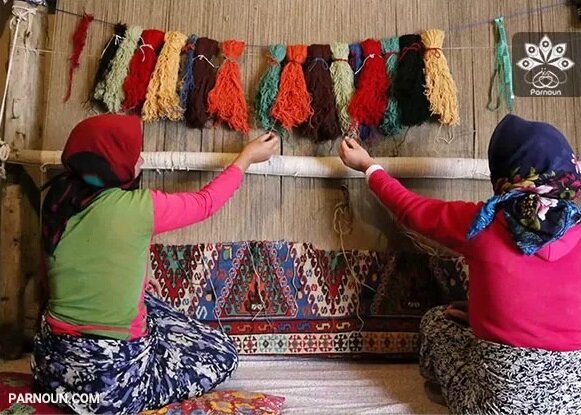Lorestan home to 700 traditional kilim-weaving workshops

TEHRAN – On Saturday, Lorestan’s tourism chief said the western Iranian province is home to some 700 traditional weaving workshops dedicated to kilim carpets.
Currently, over 900 craftspeople are actively engaged in producing Kilims across the province, Ata Hassanpur told reporters.
Kilim is a pileless floor covering handwoven in most places where pile rugs are made. The term is applied both generally and specifically, with the former use referring to virtually any rug-like fabric that does not have a pile.
on average, over 21,000 square meters of kilims are made in Lorestan per annum, the official said.
“In addition, local crafters create the same number of handmade carpets and rugs in a year.”
The kilims are often woven on narrow looms, and two mirror-image pieces are sewn together along the long edge to produce the completed kilim. The vertical color junctions involve a discontinuity of the wefts, the colored yarns that produce the design.
When used specifically the term refers to a more limited number of techniques, including slit tapestry, warp sharing, and various forms of interlocking tapestry weave.
Persian carpets are sought after internationally for their delicate designs and their good quality. Among Persian carpets, particularly those of the classic period, the medallion may represent an open lotus blossom with 16 petals as seen from above, a complex star form, or a quatrefoil with pointed lobes.
Persian carpets are sought after internationally with the medallion pattern being arguably the most characteristic feature of them all. Weavers spend several months in front of a loom, stringing and knotting thousands of threads. Some practice established patterns, some make their own.
Each Persian carpet is a scene that seems as ageless, a procedure that can take as long as a year, these efforts have long put Iran’s carpets among the most complex and labor-intensive handicrafts in the world. When the weaving is finally done, the carpet is cut, washed, and put out in the sun to dry.
Throughout history, invaders, politicians, and even enemies have left their impact on Iran’s carpets. As mentioned by Britannica Encyclopedia, little is known about Persian carpet making before the 15th century, when art was already approaching a peak.
For instance, the Mongol invasion of the 13th century depressed Persia’s artistic life, only partially restored by the renaissance under the Mongol Il-Khan dynasty (1256–1353). Although the conquests of Timur (who died in 1405) were in most respects disastrous to Persia, he favored artisans and spared them to work on his great palaces in Samarkand.
Later in the 17th century, there were a growing demand for the production of so many gold- and silver-threaded carpets that were ultimately exported to Europe. Some were made in Kashan, but many of the finest came from Isfahan. With their high-keyed fresh colors and opulence, they have affinities with European Renaissance and Baroque idioms.
In the beginning of the 18th century, nomads and town dwellers were still making carpets using dyes developed over centuries, each group maintaining an authentic tradition. Not made for an impatient Western market, these humbler rugs of the “low school” are frequently beautifully designed and are of good material and technique.
AFM
Leave a Comment